#MemberMonday: Community Action Partnership of San Bernardino County
June 27, 2022
We do not offer food. Here’s where you can find food.
No distribuimos alimentos. Encuentre comida gratis aquí.
我們不直接提供食物,但我們能幫助您找尋食物。
Sprawling from deserts to mountains, San Bernardino County is the largest county in the nation — and Community Action Partnership of San Bernardino County (CAPSBC) has been serving the county’s residents for more than 55 years. The food bank is one of CAPSBC’s three main programs; alongside their Family Development and their Energy, Education & Environmental Services programs, addressing food insecurity is part of CAPSBC’s vision of eliminating the effects of poverty in San Bernardino County.
There are quite a few ways in which the CAPSBC food bank is addressing food insecurity, including The Emergency Food Assistance Program, community pantry program, soup kitchen/congregate feeding agencies, their senior choice program, campus cupboard program, mobile food pantry program, and diaper bank.
The Emergency Food Assistance Program (TEFAP) provides United States Department of Agriculture (USDA) commodities to a network of food pantries for distribution to eligible individuals and households within their service area. Clients are eligible to receive USDA commodities one time each month without payment or any restriction.
The Community Pantry Program encompasses any food item or product donated in-kind to the food bank program with the intent of supporting the needs of the community. Nonprofit organizations work with the food bank to operate a community food distribution. All products are provided to nonprofit organizations and to the community for free.
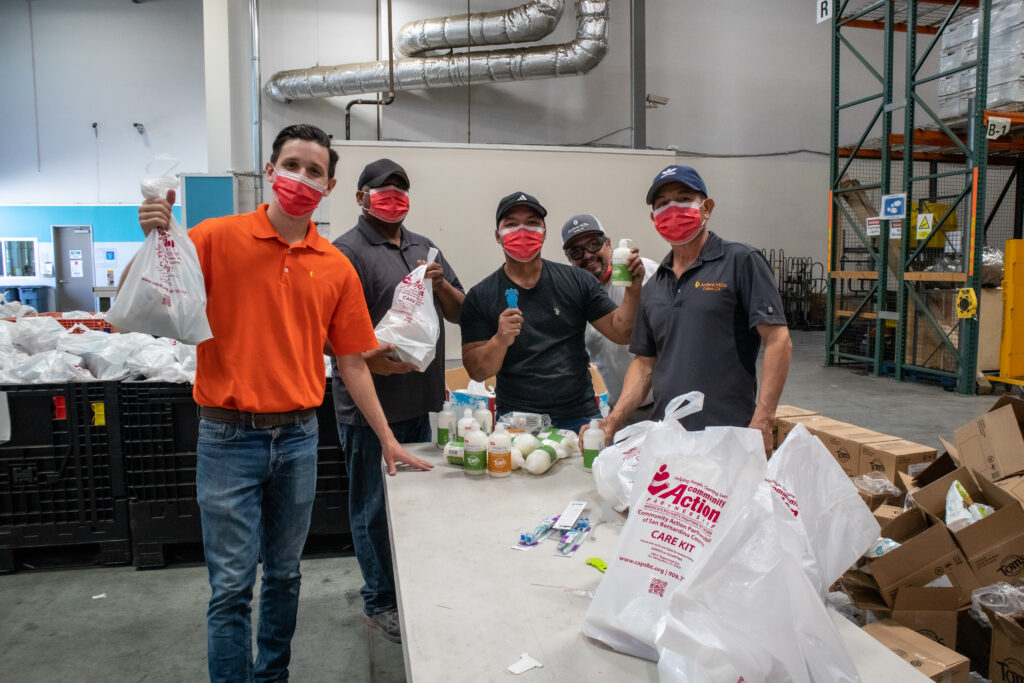
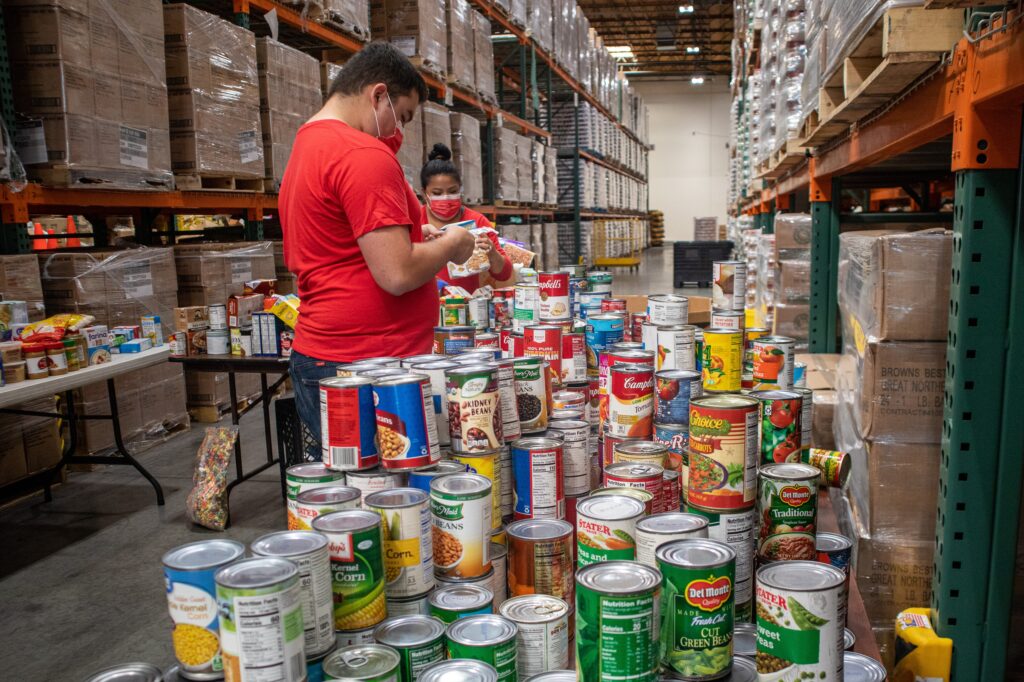
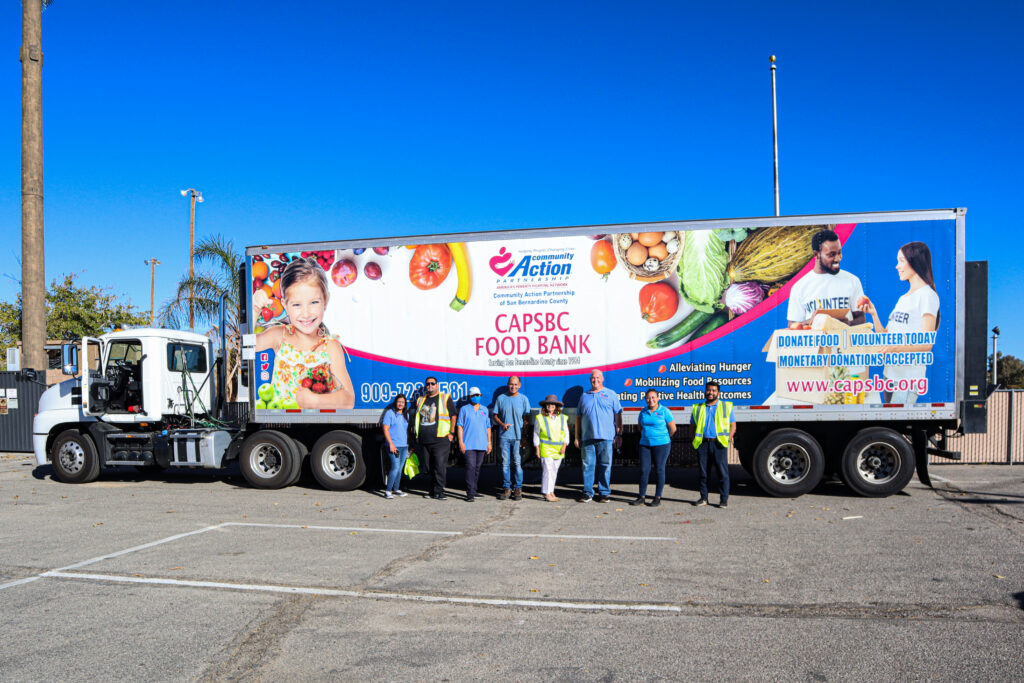
Congregate feeding sites provide prepared meals in a group setting. This type of meal service allows people to eat a nutritious meal while enjoying the companionship of friends and other members of the community. The congregate feeding program creates or supports existing soup kitchens throughout San Bernardino County by providing a monthly menu of foods.
Many older adults face barriers related to mobility, technology, income, and social stigma that may prohibit them from seeking or receiving help. The Senior Choice Program is designed to circumvent such barriers by working directly with senior centers or low-income senior housing complexes to host healthy food distributions. Foods provided through the program adhere to the CAPSBC Healthy Food Banking and Wellness Policy.
Food insecurity can pose a significant barrier to student success, enrollment, and retention. The Campus Cupboard Program works to alleviate the barriers and challenges associated with food insecurity and hunger, to encourage college and university students to remain in school and achieve their educational goals. CAPSBC provides support and resources for campus food pantries serving students in the form of food, hygiene products, and more.
Introduced in August 2021, the Mobile Pantry Program directly serves clients in areas of high need in an effort to supplement other hunger-relief agencies in that area. Truckloads of food are distributed to clients in farmers’ market-style distribution settings. Food becomes more accessible in underserved communities where people with limited financial resources may not be able to access food through traditional grocery stores or food pantries.
Having mobile units in such a geographically diverse county is important because the mobile units help extend the organization’s capacity to close gaps in service locations.

Since its inception, the Mobile Pantry Program has assisted 29,268 individuals with over 235,546 pounds of food, 53,374 pounds of assorted toiletries, and 12,800 pounds of children’s diapers and feminine hygiene products! Current locations include Adelanto, Barstow, Crestline, Colton, Highland, Montclair (2), Morongo Valley, Muscoy, Needles, Running Springs, Trona, Twentynine Palms, Yucaipa, and Yucca Valley.
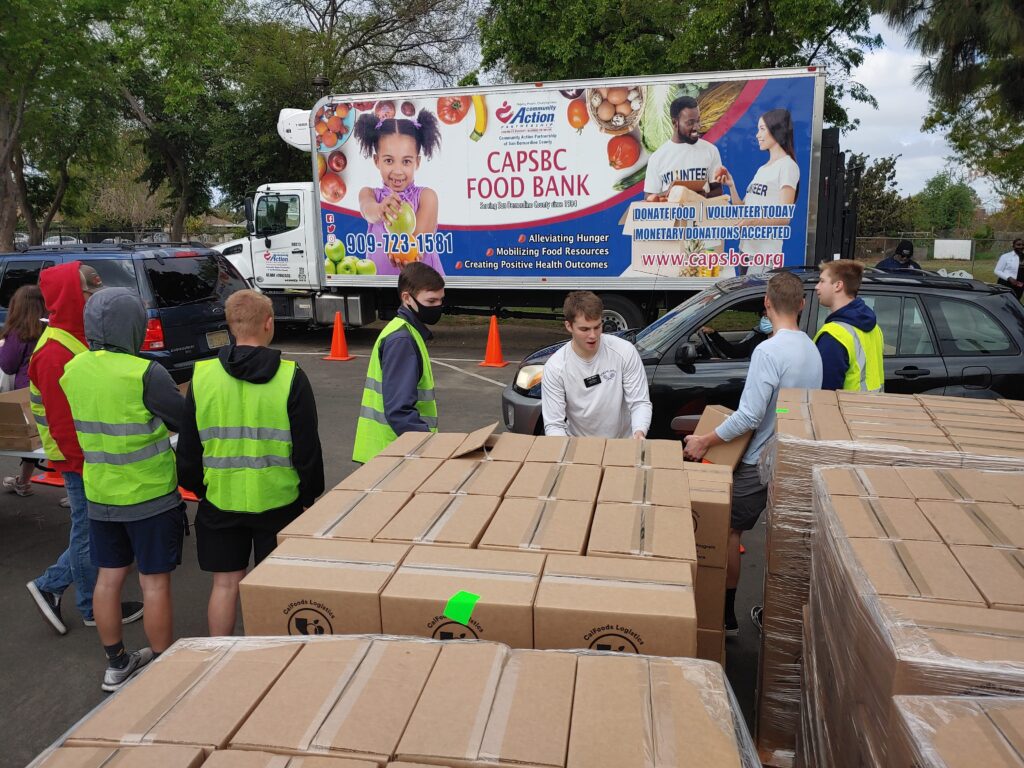
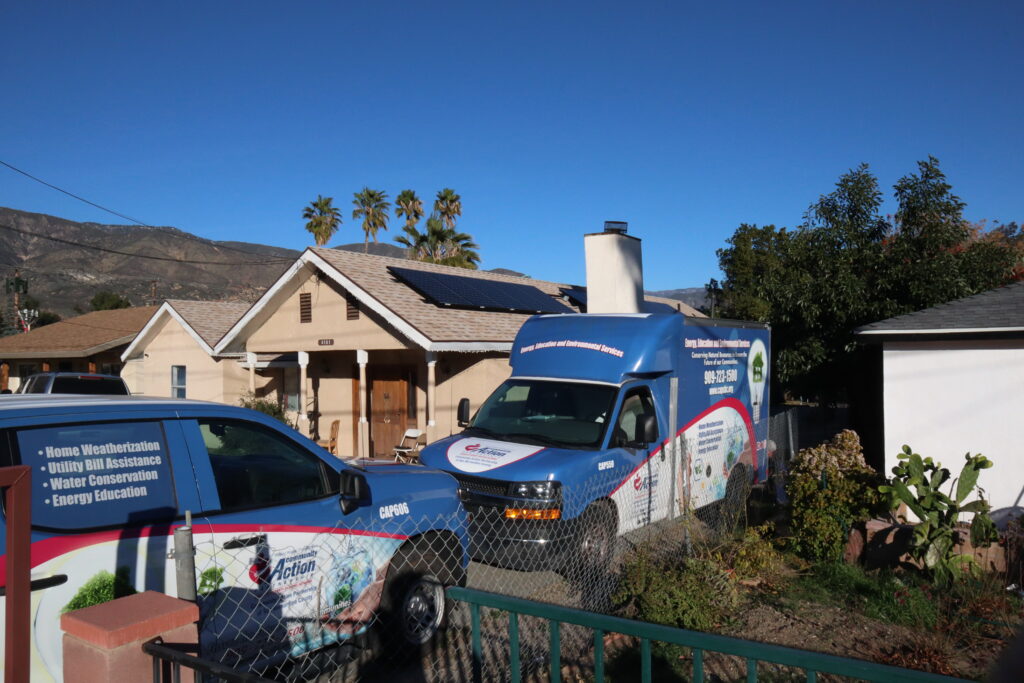
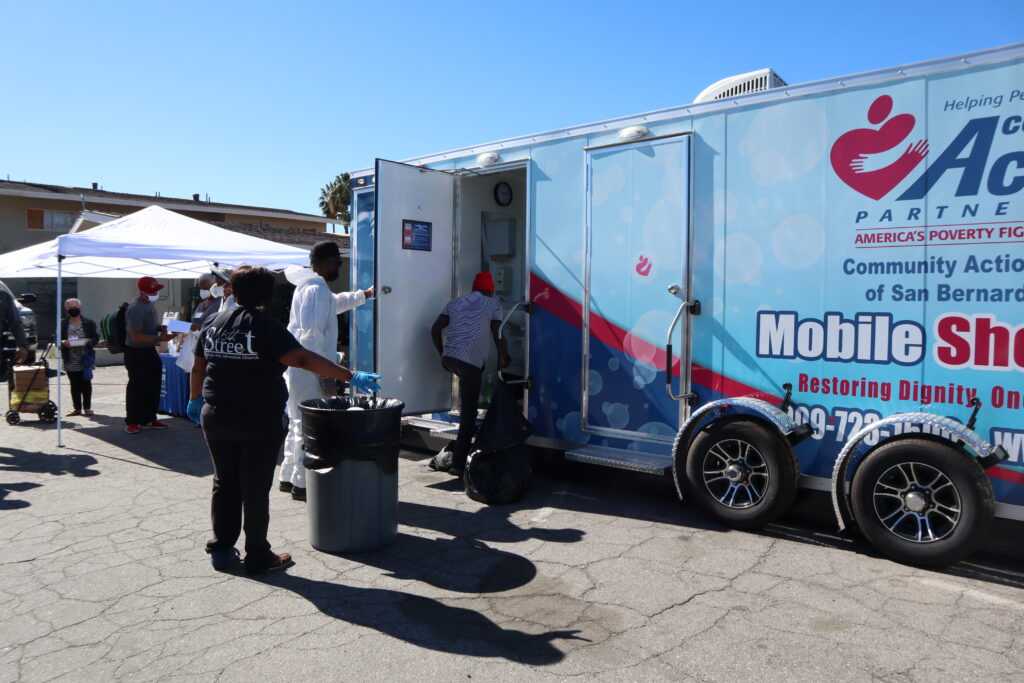
The CAPSBC Food Bank is a designated Diaper Bank in the State of California. Diapers are provided to distribution sites throughout San Bernardino County. Through partner agencies, monthly supplies of diapers are provided to support families with little ones.
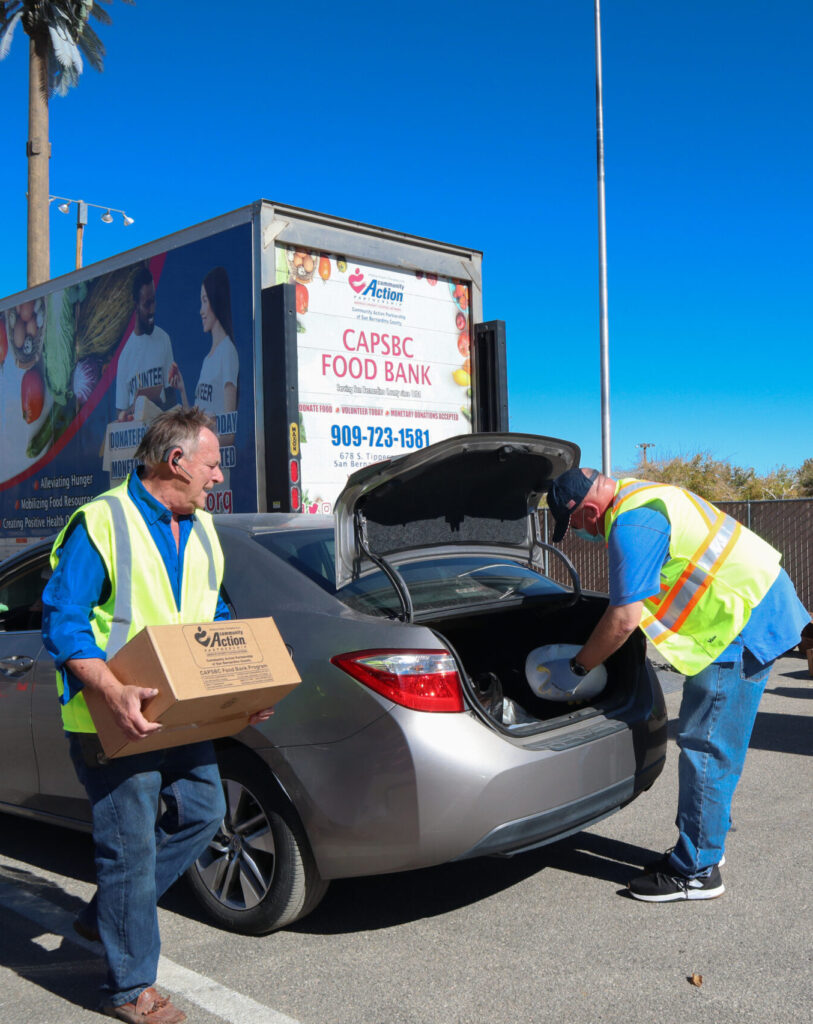
Like most food banks, CAPSBC’s Food Bank has faced a prolonged increase in demand due to the COVID-19 pandemic. With such a large county and population to serve, meeting this demand wouldn’t be possible without financial and logistical assistance. CAPSBC Food Bank put their $470,000 from the 2021/2022 EFAP Capacity grant to great use with the purchase of a semi-cab, refrigerated semi-trailer, industrial cooler, and warehouse inventory system.
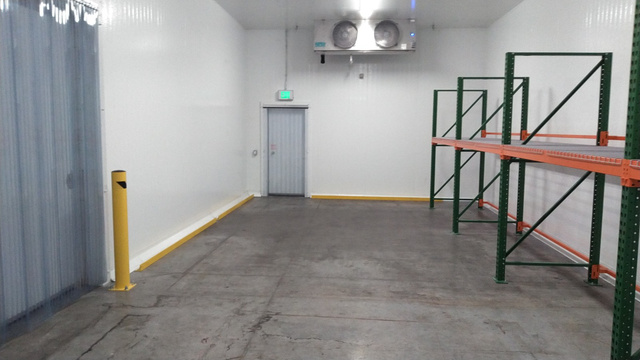
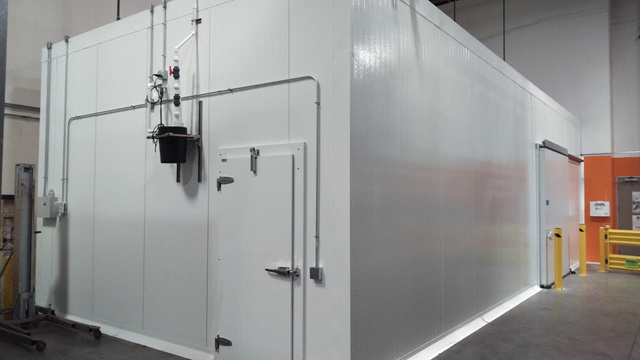

This year, CAPSBC’s Food Bank Program has received a total of 2,515,494 lbs. at a value of $3,319,013 of USDA foods, 607,686 lbs. of purchased foods, and 2,525,680 lbs. of donated foods from various vendors including Sam’s Club, Stater Bros, Amazon, Home Chef, and Growers Fresh.
CAPSBC Food Bank currently partners with 127 USDA distribution sites, 96 Community Pantry Program sites, 25 Congregate Feeding Agencies/Soup Kitchens, 14 Senior Choice Nutritional programs, and 11 Campus Cupboard partners — totaling 273 programs — to alleviate hunger and food insecurity throughout San Bernardino County.
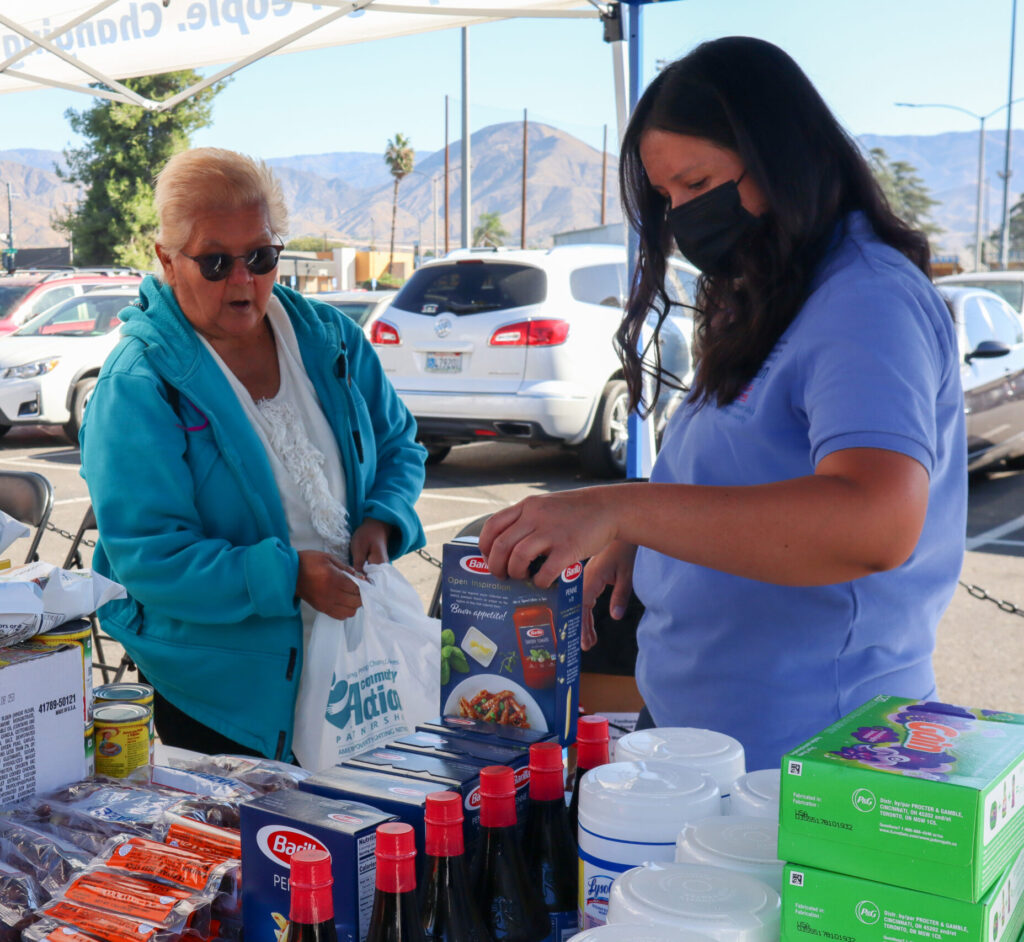
It is these kinds of huge collaborative efforts that make it possible for our network of 41 member food banks to meet the need of Californians in their communities. We are so proud to have CAPSBC Food Bank as one of our member food banks, and we are amazed by all of the work that their staff does every day to fight hunger in San Bernardino County.
You can follow CAPSBC on Facebook, Twitter, Instagram, and LinkedIn.